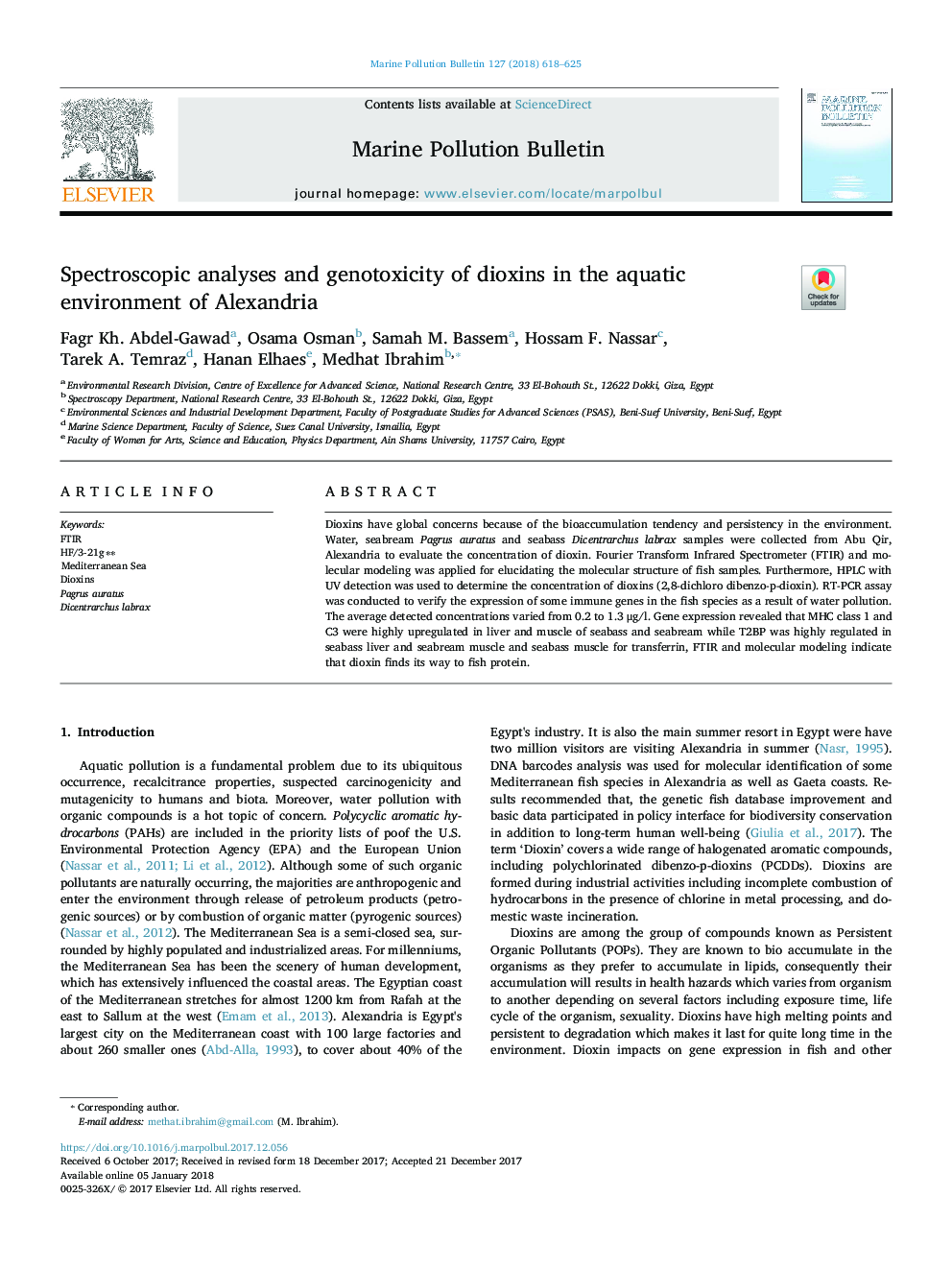| Article ID | Journal | Published Year | Pages | File Type |
|---|---|---|---|---|
| 8871717 | Marine Pollution Bulletin | 2018 | 8 Pages |
Abstract
Dioxins have global concerns because of the bioaccumulation tendency and persistency in the environment. Water, seabream Pagrus auratus and seabass Dicentrarchus labrax samples were collected from Abu Qir, Alexandria to evaluate the concentration of dioxin. Fourier Transform Infrared Spectrometer (FTIR) and molecular modeling was applied for elucidating the molecular structure of fish samples. Furthermore, HPLC with UV detection was used to determine the concentration of dioxins (2,8-dichloro dibenzo-p-dioxin). RT-PCR assay was conducted to verify the expression of some immune genes in the fish species as a result of water pollution. The average detected concentrations varied from 0.2 to 1.3 μg/l. Gene expression revealed that MHC class 1 and C3 were highly upregulated in liver and muscle of seabass and seabream while T2BP was highly regulated in seabass liver and seabream muscle and seabass muscle for transferrin, FTIR and molecular modeling indicate that dioxin finds its way to fish protein.
Related Topics
Physical Sciences and Engineering
Earth and Planetary Sciences
Oceanography
Authors
Fagr Kh. Abdel-Gawad, Osama Osman, Samah M. Bassem, Hossam F. Nassar, Tarek A. Temraz, Hanan Elhaes, Medhat Ibrahim,
